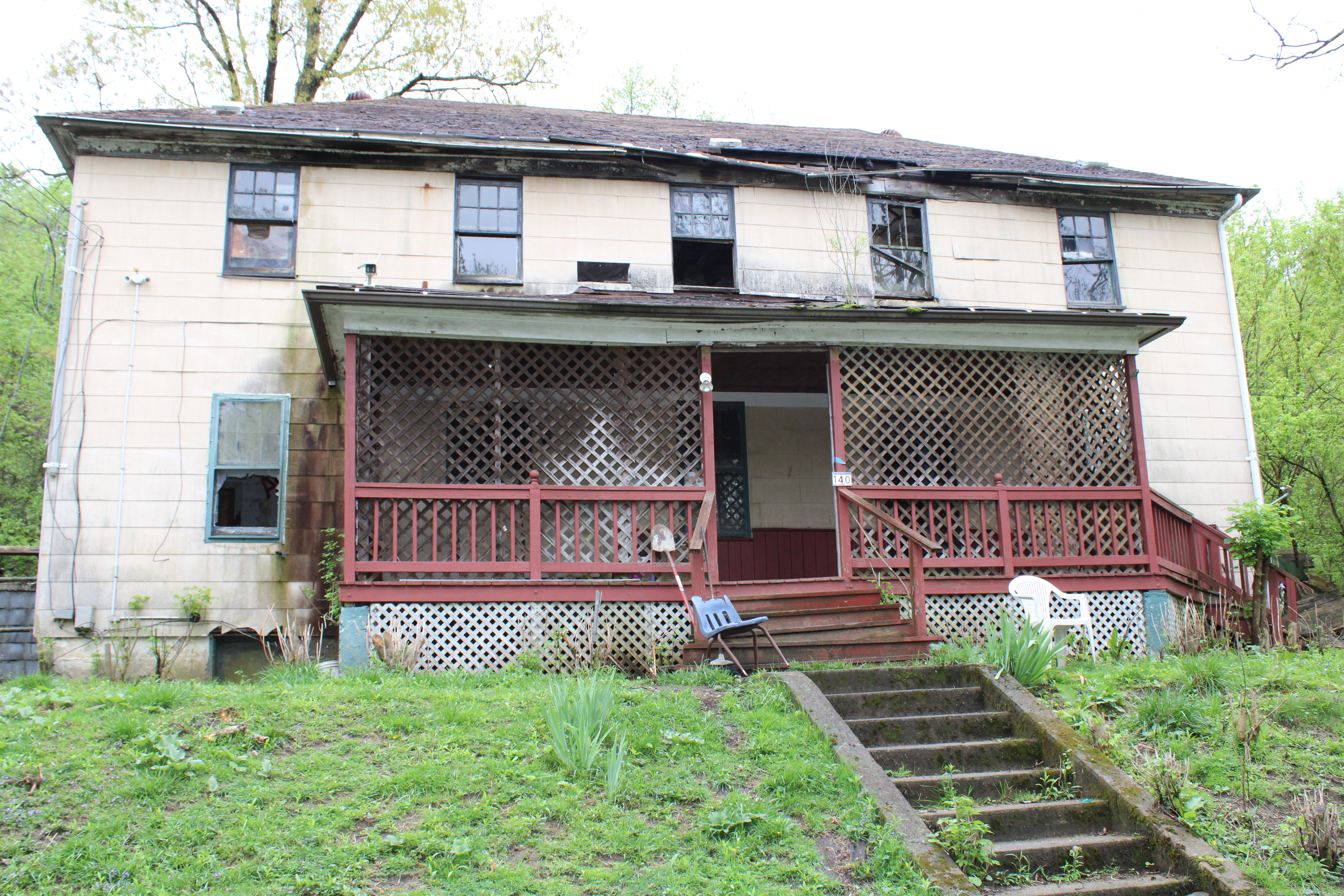The Silent Streets of Yellow Dog Village
Recently, I embarked on a travel adventure to Kittanning, PA, about an hour and a half north of Pittsburgh, to explore Yellow Dog Village—an abandoned town I had read so much about. This hidden piece of history had been calling my name, and I couldn’t wait to experience it firsthand.
This hidden gem, now an abandoned community, was once a thriving company town, home to workers of the nearby limestone quarry and cement plant. As I walked through its quiet streets, the echoes of its past whispered in the wind, reminding me of the resilience and impermanence of small-town America.

A Brief History of Yellow Dog Village
Yellow Dog Village was established in the early 1900s as a company town. Like many industrial towns of its time, it was built to house workers and their families, providing them with a close-knit community where their livelihood was tied to the nearby industries. The name “Yellow Dog” comes from the yellow-dog contracts, agreements that workers were required to sign, promising they wouldn’t join labor unions—a controversial practice in its day.

At its peak, the village boasted neat rows of homes, a schoolhouse, and a community store. Workers lived modest but comfortable lives here, close to their jobs and each other. However, as industrial demands changed and businesses relocated or closed, Yellow Dog Village slowly lost its population, and by the 1970s, the town was mostly deserted.

The property currently consists of 19 duplexes, single-family homes, a large manager’s residence, and a boarding house. The closure of the limestone mines in the 1950s marked the beginning of Yellow Dog Village’s decline. However, families continued to live there until around 2010. The final blow came during the housing boom, which led to poor financial decisions and, ultimately, the property’s water supply being cut off. In an attempt to generate income, anything valuable was stripped from the homes, reducing them to empty shells of their former selves.
From 2010 to 2014, the village remained abandoned and was subject to significant vandalism. Surprisingly, despite the damage, there was little graffiti, which helped preserve much of the village’s historic character.

Walking Through a Ghost Town
Walking through Yellow Dog Village is like stepping back in time. The houses, though worn and weathered, still stand, frozen in a state of mid-century Americana. There’s something eerie yet beautiful about the crumbling facades, the overgrown lawns, and the stillness that now inhabits the once lively community.

One of the most fascinating aspects of the village is how nature has begun to reclaim it. Ivy crawls up the sides of old houses, and trees have taken root where streets and sidewalks once saw the daily hustle and bustle of residents. It’s both a testament to how quickly time can pass and how resilient nature is.

As I explored, I couldn’t help but imagine what life was like here decades ago. The houses, with toys left behind and creaky floors, must have once echoed with children’s laughter. Now, they sit in silence, a ghostly reminder of a time long gone.

Preservation and Future Plans
Yellow Dog Village hasn’t been completely forgotten. In recent years, efforts have been made to preserve the town, and it is occasionally opened for tours and photography events. These efforts aim to maintain the historical integrity of the village while also sharing its story with those interested in America’s industrial past.

The current owner has also worked to restore some of the homes, which allows visitors to get a sense of what life was like during Yellow Dog’s heyday. Walking through these preserved homes feels almost as if the residents just stepped out for a moment, with some interiors still showcasing original furniture and decorations.


Step Into the Past With Me: Watch the Full Video Tour!
To get an even closer look at the eerie charm and rich history of Yellow Dog Village, check out my video below! I take you on a walking tour through the abandoned homes and buildings, giving you a firsthand glimpse of what remains of this forgotten company town. From crumbling facades to nature slowly reclaiming the village, you’ll see the fascinating blend of history and decay that makes Yellow Dog such a unique place to explore. Don’t forget to like, comment, and subscribe for more adventures!”
This area was once a baseball field and playground where the village children would come to play, but today, it serves as grazing land for sheep and goats.

Finding Hidden Gems with RoadsideAmerica.com
One of my favorite tools for discovering unique roadside attractions is the app RoadsideAmerica.com. It’s a fantastic resource that helps you uncover quirky, off-the-beaten-path stops, whether road-tripping across the country or exploring your backyard. I often use this app to find hidden gems and plan fun detours, just like I did during my trip to Kittanning. If you love finding interesting places that most people miss, I recommend trying it for your next adventure! Just a note, I didn’t find Yellow Dog Village on the app. But It help me find Sam: Hamburger Muffler Man at was on the way. A new post coming soon of the Muffler Man of PA. Here’s the link for the app: Roadside America

Until next time,
Susan
My visit to Yellow Dog Village was a poignant reminder of how fleeting time can be, especially for small towns dependent on single industries. Yellow Dog is a place where history stands still, where you can see firsthand the impact of industrial decline and the inevitable passage of time.
If you’re a fan of history, photography, or ghost towns, I highly recommend a visit to Yellow Dog Village. It’s an experience that brings you face-to-face with the past, allowing you to connect with a piece of Pennsylvania’s forgotten history.
As I left the village, I felt a deep appreciation for the stories it holds and the people who lived, worked, and built their lives there. Yellow Dog may no longer be a bustling community, but its legacy lives on, waiting to be discovered by curious travelers like me.
Have you ever visited a ghost town? What was your experience like? Let me know in the comments!
